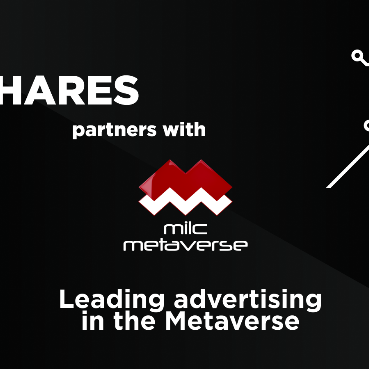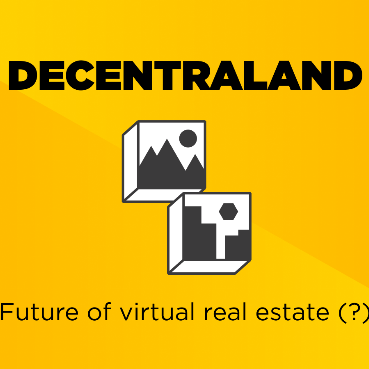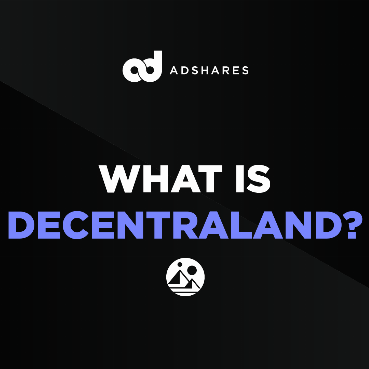Monetizing the Metaverse
Adshares competes with GoogleAds in order to decentralise the advertising market. Lately we have announced that Adshare’s goal is to utilize NFTs in order to help projects with marketing in the Metaverse. With Facebook’s rebranding to Meta, we now see that the Metaverse trend will only get bigger.
It’s quite possible that Facebook will also display ads in its Metaverse. Adshares mission is to display ads or even art everywhere else, in all different kinds of Metaverses. Naturally, in a decentralized way to eliminate 3rd parties which collect a tremendous amount of fee from Publishers and Advertisers.
Why Blockchain Matters For Creating Metaverse?
In 1992 Neal Stephenson was the first to mention ‘metaverse’ in his science fiction novel Snow Crash. In his book, delivery drivers travel the metaverse to rescue themselves from a corrupt, capitalistic world.
Fast forward to today. Metaverse is no longer a sci-fi thing. Instead, it is a living reality.
If you ever played Minecraft or Fortnite, you have experienced the metaverse; these games are nothing but metaverse games.
Essentially, a metaverse is an open virtual universe where people interact, create landscapes, buy and sell virtual land, play games, work, chat, and whatnot. In short, the metaverse is the 3D version of the Internet.
At the heart of the metaverse is bringing digital experiences closer to reality.
Imagine wearing a VR headset and attending the office meeting in a 3D space from your home, playing games where you get to experience the gameplay, or renting your virtual land in a blockchain metaverse.
Driven by the potential of this ‘experiential reality’, be it tech giants like Facebook (now Meta) or blockchain developers, everyone is betting on the metaverse.
This was metaverse in a nutshell.
Keep reading to understand the metaverse in detail. We will cover everything from what is metaverse to the importance of blockchain and NFTs in the metaverse.
What is Metaverse?
Metaverse is a combination of two words — ‘meta’ and ‘verse’. Meta stands for beyond while ‘verse’ represents the universe. If we look at it this way, the word metaverse is itself a definition.
It is an immersive virtual universe beyond the real world.
In simple words, a metaverse is a 3D universe made up of virtual spaces where people in their digital avatars interact with each other to play games, work, and chat, among other social interactions. When complemented with hardware like augmented reality (AR) and virtual reality (VR) headsets, this virtual space creates a real-life-like digital experience.
Minecraft is an example of the metaverse. Here, players build landscapes and other objects using 3D blocks. When we say players create their world, we mean it. For example, students at UC Berkeley created a virtual campus on Minecraft and even conducted their graduation ceremony in this virtual space.
Traditional massive multiplayer games like Minecraft and Fortnite fall behind when compared to blockchain metaverse.
Be it Minecraft or Fortnite; a centralized entity owns all Web 2.0 (blockchain is Web 3.0) games. Therefore, players need to follow the rules set by the developers. Also, participants don’t own the in-game items they purchased as these digital objects are not freely tradeable outside the game.
Whereas, in blockchain-metaverse games, participants are at the center. They can participate in the governance process and decide on game protocols, plus, the in-game objects have real-world value represented by non-fungible tokens or NFTs.
In blockchain-based games, in-game items are minted as freely tradeable NFTs. Be it in-game weapons, skins, or clothes, virtual land, inventory, every in-game item is an NFT. Players are free to use these NFTs as they please — sell, collect, trade, or even rent. To top this off, metaverse in blockchain networks have their native cryptocurrency.
Long story short, metaverse built on blockchain technology is decentralized (governed by the participants) and, most importantly, has its open economy powered by NFTs and cryptocurrencies.
Blockchain And Metaverse
For a bit of background, blockchain is a decentralized ledger technology (DLT) that stores records permanently on a global network consisting of thousands of computers. This distributed database is maintained and governed by the network participants.
When you use Facebook, Instagram, Google, etc., you are accessing the data stored in their centralized servers. On the contrary, when you use a blockchain-based application, you access data from a decentralized network free from any central control.
No central control means your data is not waiting to be exploited, and most importantly, you control your data. For example, no central entity controls blockchain apps; the participants govern them.
Blockchain promises permissionless access, decentralized governance, high-speed exchange, and the seamless transfer of value using cryptocurrencies and NFTs. In short, blockchain has all the ingredients to create a robust metaverse ecosystem.
If you are wondering how metaverse works, its functions are powered by smart contracts. These are blockchain programs that execute predefined conditions. Think of it as the back-end logic of the metaverse.
Now that you know why the blockchain metaverse is the future, let’s look at the existing metaverses in blockchain.
Axie Infinity, the most popular blockchain-based game, is an example of how blockchain creates an inclusive metaverse where users are at the center. This game is similar to Pokemon Go, where you breed game creatures called Axies and battle with other players. Axie Infinity has nearly 2 million daily active users and has generated $2.5 billion in NFT trading volume.
Other popular blockchain metaverses include Decentraland and The Sandbox. These virtual worlds allow users to create landscapes like virtual casinos and theme parks that earn users cryptocurrencies. For example, in June 2021, a 259 parcel virtual estate in Decentraland sold for over $900,000. In February, Axie Infinity sold nine plots of virtual land for $1.5 million. This indicates the popularity of virtual lands.
NFTs — The De-Facto Token For Owning Value in the Metaverse!
Non-fungible tokens or NFTs are blockchain tokens that can represent anything of value, whether audio, video, digital, or even physical. Each NFT is unique and represents publicly verifiable ownership of the asset for which it was minted.
NFTs have become quite a rage lately. Celebrities like Snoop Dogg, Steve Aoki, Jay-Z to companies like Visa are pouring millions into NFTs.
In a blockchain-based metaverse, each item is an NFT. The virtual land, avatar costumes, shoes, you name it, everything is an NFT. Unlike traditional games where in-game objects are limited within the game, metaverse NFTs are freely tradeable and have real-world utility.
NFT technology enables metaverse developers to tokenize virtual assets in a way that they can easily change hands. NFTs make it possible to mimic real-world value in the metaverse. For example, Burberry, the luxury fashion giant, launched their exclusive character skins in Blankos Block Party, a metaverse game. Players can now flaunt their luxury accessories in the metaverse.
GameFi Is Attracting More People To The Blockchain Metaverse
The blockchain-based gaming industry is attracting more and more people to the metaverse ecosystem. These games have introduced passive income opportunities for players in addition to the value that NFTs themselves hold.
Decentralized finance (DeFi), financial services like lending, borrowing, etc., built on the blockchain when combined with NFTs is called GameFi. Put simply, apart from trading NFTs, blockchain-based games provide other income opportunities like earning interests on holding NFTs. For instance, projects like CyberKongz and SupDucks offer interest to their holders.
To put things into perspective, NFTs accounted for 22% of the total in-game trading volume of $2.3 billion in Q3 2021.
NFTs are no longer just a medium to collect rare digital items; it has also become an inseparable part of blockchain-powered games.
Tech Giants Are Jumping On the Metaverse Bandwagon
In June 2021, Mark Zuckerberg informed his employees that Facebook would work towards bringing metaverse to life. Mark also discussed the idea of virtual workspaces called ‘infinity offices’.
Facebook is all in for grabbing the early movers’ advantage in the metaverse space. The company owns the popular Quest VR headset — Oculus. Mark also stated that Facebook’s virtual reality technology would be ready for metaverse capabilities by the end of this decade.
To reflect the company’s commitment to the metaverse, Facebook was rebranded to ‘Meta’ on October 29, 2021.
Other tech leaders like Google, Microsoft, Samsung, and Sony have joined Facebook in the XR Association, which aims to bring ‘experiential reality’ into the mainstream.
Metaverse in the hands of centralized companies might likely be another way of increasing their revenues. These companies will typically create a closed metaverse ecosystem to benefit themselves; this is the exact opposite of the open-world metaverse.
Jerod Venema, the founder of LiveSwitch, says that with metaverse, Facebook aims to fully immerse its user base into its ecosystem, making more money from them.
Additionally, if big companies create metaverses, chances are these virtual spaces might not be interconnected as each company has a distinct ecosystem.
This is where the blockchain metaverse comes into the picture.
Blockchain technology has all the capabilities of creating a community-governed decentralized metaverse where users can easily transfer ownership of virtual assets and make financial transactions using NFTs and cryptocurrencies.
Conclusion — Why Metaverse Will Be The New Internet?
Before the Internet was a thing, every activity involved physical interaction. From visiting the post office to sending mails to buying groceries, everything required you to be physically present.
With the introduction of the Internet, social interactions changed. The Internet brought everyone online. You can send messages, book a taxi, buy clothes, electronics, everything in just a few clicks.
Metaverse is all set to bring real-life experiences in this online world by creating virtual spaces with all the elements of the real world. So people can play games, buy real estate, breed virtual animals (thanks to CryptoKitties), work, meet other people, and whatnot.
Blockchain is central to creating a decentralized metaverse free from central control. With blockchain tokens like NFTs and cryptocurrencies, metaverse has an economy of its own where the value changes hands seamlessly.
There is no denying that a metaverse that has all the real-world aspects isn’t yet in existence. However, few parts exist to make such a virtual universe — gaming metaverse and virtual landscapes and a fully functional economy powered by NFTs and cryptocurrencies.
Considering all the advancements in metaverse technology, it would be wise to say that metaverse might become the new Internet sooner or later.
As Adshares we want to be a part of this new Internet to make sure that ads are also decentralized in the worlds.




